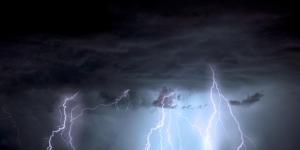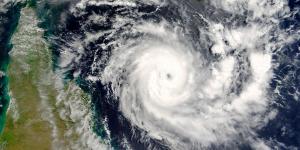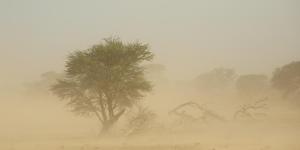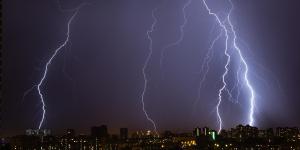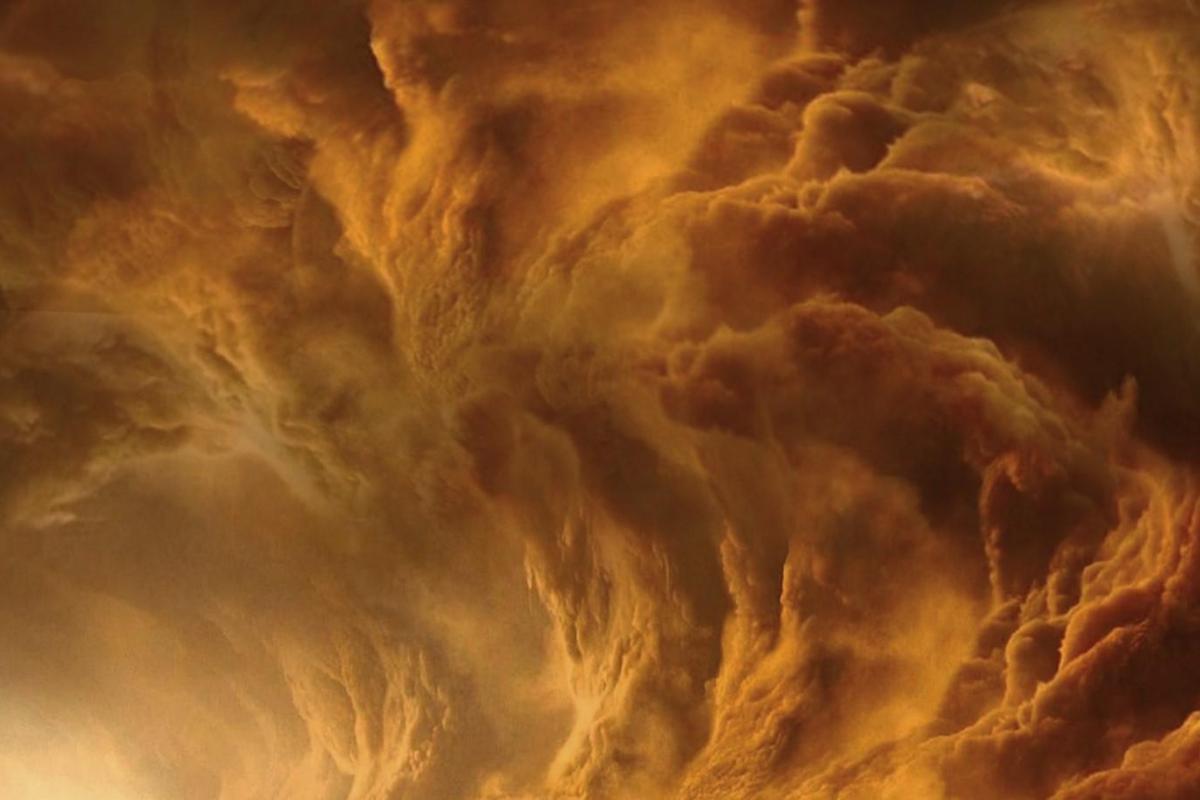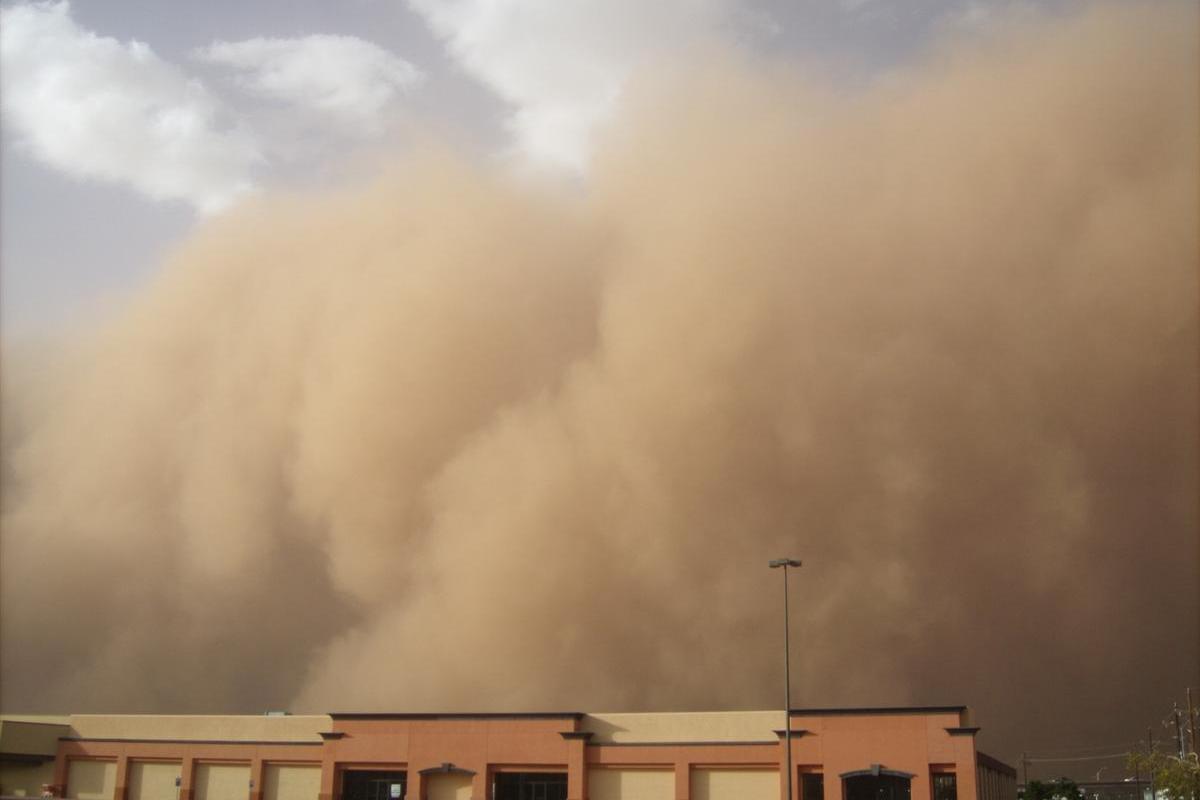What Causes Sandstorms? - Dust Storm Formation


A sandstorm is a weather phenomenon that occurs when the wind blows large amounts of sand or dust into the air. It is for this reason they are also known as dust storms. They create a dense cloud of earth that darkens the sky and significantly reduces visibility. These storms generally occur in desert or semi-arid areas. This is due to the presence of dry and loose soils which can be picked up. There is usually little vegetation as this makes it easier for the wind to lift and transport sand. They can also occur near beaches or in coastal regions where sand dunes are present.
At thedailyECO, we find out what causes sandstorms? We look in more detail at an explanation of dust storm formation, as well as some practical advice on what to do if you are caught in a sandstorm.
What is a sandstorm?
A sandstorm is a meteorological phenomenon which in involves strong winds. Other meteorological phenomena which involve strong winds include cyclones and hurricanes, but sandstorms are very specific. A sandstorm or dust storm moves sand, dust and other particles via strong winds over a particular distance for a certain amount of time.
More than a meteorological phenomenon, many sandstorms are considered natural disasters, especially in arid and semi-arid regions. The sandstorm can last from a few minutes to several hours, depending on the strength of the wind and the amount of sand available.
During a severe dust storm, the sand and other particles are blown by the wind at high speed. These speeds can reach hundreds of miles per hour. The impact of sand particles on exposed surfaces, such as buildings, vehicles, or even human skin, can be abrasive and cause damage.
One of the most noticeable features of a sandstorm is decreased visibility. The dense cloud of sand particles reduces sunlight and can darken the sky to the point where it appears to be night. With very limited visibility, it is extremely dangerous to travel or drive during a sandstorm. Not only does it become difficult to distinguish objects and potential hazards on the road, but the dust can clog mechanisms and shut down engines without warning.
Discover how another natural disaster can be created with our article on how voclanoes are formed.

How does a sandstorm form?
Now we know what ar sandstorms, we provide a dust storm formation explanation. These meteorological phenomena are caused by a combination of atmospheric and geographic factors:
- Sandstorms form in an area with dry and loose soils such as deserts (see diagram below). In these areas sand is exposed and can be blown up by the wind. The lack of vegetation and the absence of a protective cover allow the wind to easily grab and blow sand particles into the air.
- The presence of strong wind currents is required to create a sandstorm. These winds are often associated with weather systems such as cold fronts or convective storms (thunderstorms). When wind blows across desert areas, it can pick up speed and create a powerful updraft that lifts sand off the ground. These fronts of cooled air which pick up the sand are known as gust fronts.
- The process of disturbing loose material from the ground is a type of erosion known as deflation. This is broken down further into three mechanisms known as saltation, creep and suspension. During this process, the wind blows along the ground and pushes the sand particles up. If the particles are small and light enough, they can be carried considerably long distances by the wind. As the wind intensifies, more sand particles are blown and a cloud of dust begins to form in the air.
- As this cloud of dust grows and moves with the wind, it becomes a sandstorm. The amount of sand and the speed of the wind determine the intensity of the sandstorm. The strongest storms can generate extremely powerful wind gusts, capable of causing significant damage to structures and obstacles.
It is important to note that sandstorms are not static events. The shape and size of the dust cloud can constantly change as the wind varies in speed and direction. Sometimes sandstorms can move for hundreds of miles, affecting vast areas and altering the geography of the landscape.

Is there a difference between sandstorms and dust storms?
Although most commonly associated with desert areas, sandstorms can be found in different types of ecosystems. They do have to be at least semi-arid since wet soil will not be easily picked up by winds.
The terms sandstorm and dust storm are used interchangeably. Some meteorologists differentiate between the two mainly by the area covered. A sandstorm may refer specifically to dust clouds created by strong wings in desert areas. These sand particles tend to be the heaviest type of sandstorms. Others may refer to strong winds which pick up finer particles as dust storms. These are more common in urban areas.
The effects of sandstorms
Sandstorms can cause serious damage to the environment, as well as the health of animals and human societies. Some of the most frequent problems and types of damage caused by sandstorms include the following:
- Causing completely zero visibility and making it impossible to move safely.
- It can tear up the topsoil, dragging it to different places. This is particularly troubling for agriculture and entire crops can be decimated in just a few minutes.
- It can be a carrier of infectious microorganisms. For example, meningococcal meningitis is a bacterial infection that affects the membranes that surround the spinal cord and brain. It can cause brain damage and has about a 50% fatality rate in cases which are not treated. In the famous ‘meningitis belt’ located in parts of sub-Saharan Africa, this outbreak of infection occurs frequently.
- It is related to environmental conditions, such as dust content, low humidity, time and rates of infection.
- Damage to the mucous membranes of the nose and throat caused by sand can lead to bacterial infections, which can be exacerbated by the iron oxide content in the sand.
- Sand particles abrade surfaces and cut into skin. Just as they can enter our body through the mucosa, they can also make small cuts in any part of the skin. In the same way, they can wear down the surfaces of buildings, statues and many other forms of infrastructure.
Many dust storms are so large that they can be seen in photographs taken by satellites. The strong air currents carry the dust in suspension to other places where there is precipitation, causing the raindrops to stain the ground with differently colored earth.
Learn more about meterological phenomena with our article on the difference between weather and climate.

How to protect yourself from a sandstorm
When you find yourself in the middle of a sandstorm, it is crucial to take steps to protect yourself. This way you can best minimize the associated risks. Here are some practical recommendations to stay safe during a dust storm:
- Seek shelter indoors: whenever possible, seek shelter in a sturdy building or enclosed vehicle. These locations provide protection from airborne sand particles and reduce the risk of injury.
- Protect yourself from dust inside: if you are inside a building affected by a sandstorm, be sure to seal the doors and windows with damp cloths to prevent dust from seeping inside. If you have ventilation systems, turn them off or use them in recirculation mode to keep dust out.
- Wear protective glasses: during a sandstorm, sand particles can be carried by the wind and cause irritation or injury to the eyes. Wear tight-fitting goggles or wraparound sunglasses to protect your eyes. Avoid rubbing your eyes as this could make any irritation worse.
- Cover mouth and nose: protect your airways by covering your mouth and nose with a mask, bandana, or any clean, breathable cloth. This will help filter sand particles and prevent inhalation of dust. Make sure it is tied snugly to keep sand out.
- Avoid driving or walking outdoors: visibility is drastically reduced during a sandstorm, making driving or walking outdoors dangerous. If you are in a vehicle, pull over in a safe place, turn off your lights, and wait out the storm. If you are walking, seek shelter indoors and wait until the storm has dissipated.
- Stay informed: follow weather updates and instructions from local authorities. Pay attention to sandstorm warnings and take the necessary precautions. If you're in a region prone to sandstorms, keep essential supplies like water, non-perishable food, and flashlights in case of an emergency.
Now we know what causes sandstorms and how they are formed, we might want to look at another type of meteorological phenomenon. Do so with our article on what is the St. Elmo's Fire meterological event?
If you want to read similar articles to What Causes Sandstorms? - Dust Storm Formation, we recommend you visit our Meteorological phenomena category.
- World Meteorological Organization. Sand and dust storms. Extracted from: https://public.wmo.int/es/nuestro-mandato/esferas-de-inter%C3%A9s/medio-ambiente/tormentas-de-arena-y-polvo
- Christelle Marot (May 2, 2022). Sand storms, an increasingly frequent global catastrophe accentuated by soil degradation. Equaltimes . Available at: https://www.equaltimes.org/las-tormentas-de-arena-una

